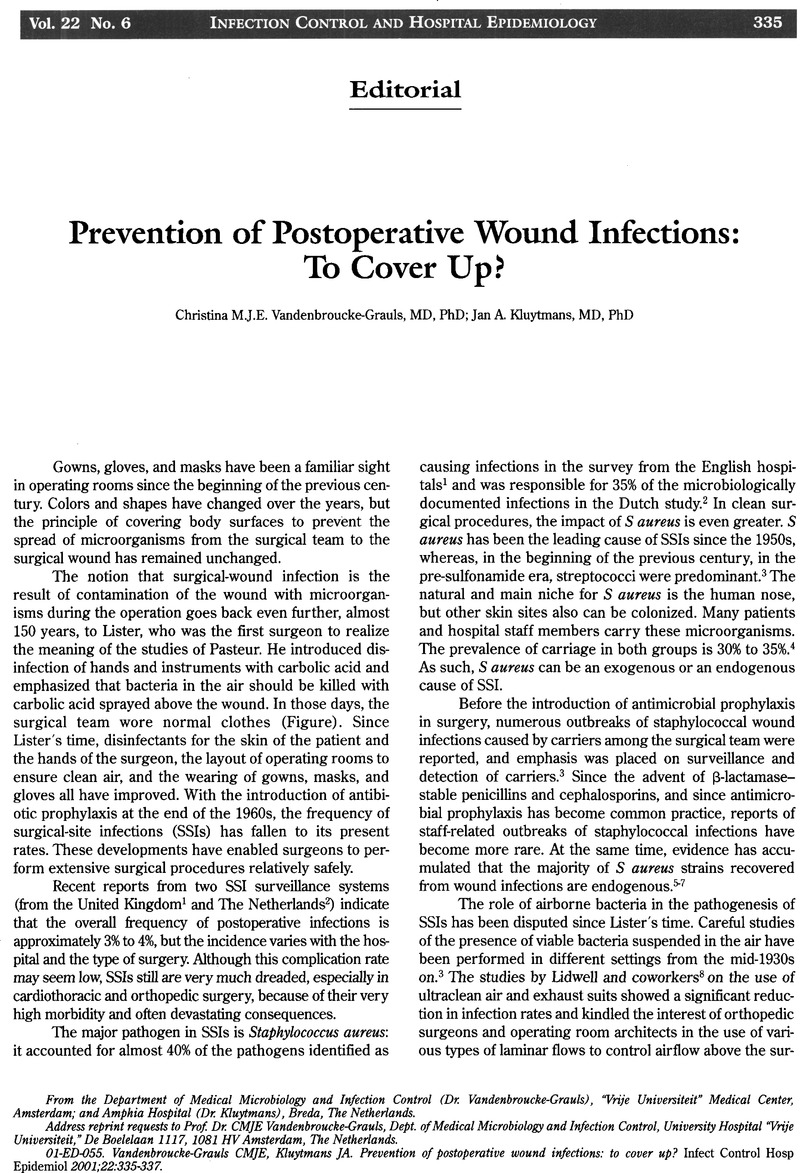Crossref Citations
This article has been cited by the following publications. This list is generated based on data provided by Crossref.
Bhatia, JY
Pandey, K
Rodrigues, C
Mehta, A
and
Joshi, VR
2003.
POSTOPERATIVE WOUND INFECTION IN PATIENTS UNDERGOING CORONARY ARTERY BYPASS GRAFT SURGERY : A PROSPECTIVE STUDY WITH EVALUATION OF RISK FACTORS.
Indian Journal of Medical Microbiology,
Vol. 21,
Issue. 4,
p.
246.
Neuman, Menahem
2005.
The use of prophylactic antibiotics in the tension-free vaginal tape procedure: is it indicated?.
Gynecological Surgery,
Vol. 2,
Issue. 2,
p.
93.



